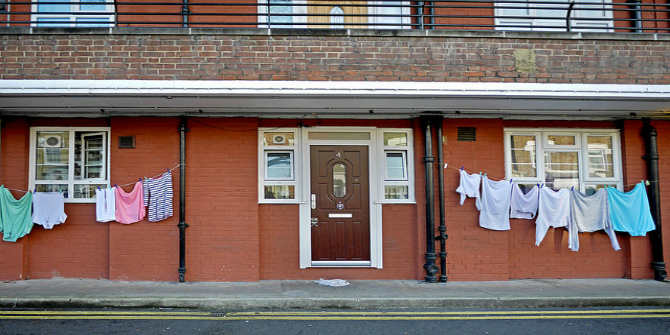 CCTV has evolved into a very different creature to what it was when the first cameras were installed. The technology has become more sophisticated and there has been a rise in peripheral products which radically change its nature and capability. With regulation severely lacking, it is time for serious public debate about where CCTV is headed and the boundaries of acceptability, argues Emmeline Taylor.
CCTV has evolved into a very different creature to what it was when the first cameras were installed. The technology has become more sophisticated and there has been a rise in peripheral products which radically change its nature and capability. With regulation severely lacking, it is time for serious public debate about where CCTV is headed and the boundaries of acceptability, argues Emmeline Taylor.
In 2009 police were called to a school in Manchester after it transpired that pupils had been filmed by their school’s CCTV system as they changed clothing for gym class; last year CCTV footage from the controversial Internet Eyes website found its way on to YouTube; and residents of Royston, Hertfordshire were outraged when a ‘ring of steel’ was erected around their town comprised of automatic numberplate recognition (ANPR) cameras to track every car entering and leaving the town. These are just a few examples of the misuse of CCTV over the last few years. For every newspaper column inch celebrating the power of CCTV to apprehend criminals, there is equal coverage denigrating the ways in which it snoops on law abiding citizens.

CCTV has evolved into a very different creature to what it was when the first cameras were installed in Trafalgar Square in the 1960s. Not only is the technology becoming more sophisticated but recent years have seen a huge rise in peripheral products which radically change the nature and capability of its operation. We now have cameras that ‘talk’, recognise faces in a crowd, analyse the way people walk, read number plates, see in the dark, fly as part of UAV drones, and even CCTV systems that use algorithms to predict the likelihood of crime occurring. CCTV has matured from its grainy adolescent image. It is getting smart, but age has brought controversy.
A ‘3D’ model of CCTV Effectiveness: Deterrence, Detection and Displacement
The UKs love affair with CCTV is largely based on its supposed success as a crime control technology and ability to reassure people against the fear of crime. However, there have been growing doubts with regards to the capability of CCTV to deliver on early promises of effectiveness. A meta-analysis of 44 evaluations found that cameras have a modest effect on preventing crime, with the most marked impact on vehicle crime in car parks. Measuring the effectiveness of CCTV is complex but a ‘3D’ understanding of deterrence, detection and displacement covers some of the basics.
1. Deterrence
The crux of the deterrence capability lies in the claim that offenders are rational beings that weigh up the benefits and risks of committing crime. If CCTV is interpreted as a risk that cannot be easily overcome, it might prevent a crime from taking place in that location. Research has shown that CCTV is least effective at deterring violent crimes. Although comparatively rare, it is these crimes that the public report being most fearful of. Expressive crimes, particularly those involving drugs or alcohol, are unlikely to be prevented by cameras because offenders are not in a rational mindset. CCTV can impact on premeditated crimes that involve a certain level of cognition and thought process, usually property crimes, but many studies report that offenders are not overly concerned about the threat presented by CCTV.
2. Detection
It has been argued that since the London bombings in July 2005, the role of CCTV has shifted from being primarily deterrence to data and intelligence gathering. Under some circumstances footage can be used to aide investigations, identify offenders, eliminate suspects and seek witnesses. However, its capabilities as a crime detection tool should not be overstated. For example, a police report in London, perhaps the CCTV capital of the world, found that in 2008 for every 1,000 cameras just one crime was solved as a result of CCTV. Returning to the idea of rational criminals, offenders can simply evade detection by wearing hats, scarves, glasses; interfering with the cameras; or even damaging them so that they are no longer operable. On the plus side using CCTV as a reactive forensic tool is cheaper as it avoids expensive monitoring costs.
3. Displacement
The displacement of crime has been a pervasive concern in relation to situational crime prevention measures. Displacement can take a variety of forms including spatial (crime is moved from one location to another), tactical (offenders use a new means to commit the same offence) and functional (offender changes crime type e.g. from street robbery to domestic burglary). Determining whether displacement has occurred is not straightforward and studies remain inconclusive. The flip side of displacement is a diffusion of benefits, whereby a beneficial influence of CCTV stems beyond the location directly targeted.
Regulation
Those finding themselves at the wrong end of the camera’s lens were no doubt somewhat comforted by the Queen’s speech back in 2011 when new measures were promised for “protecting privacy by introducing new legislation to regulate the use of CCTV”. A CCTV Code of Conduct and a Surveillance Camera Commissioner were outlined in the Protection of Freedoms Act 2012. Although many welcomed greater regulation, the Code is a toothless tiger, largely owing to two critical issues. First, the code only applies to ‘relevant authorities’; it is limited to public bodies such as the police and local governments in England and Wales. It does not include schools, hospitals, transport systems, sports venues, or importantly private companies. It has been estimated that just 1 in 70 cameras are publicly owned. If this is the case, the Code only covers a tiny proportion, around 2%, of cameras overall. For some, perhaps it is a relief that there is not a ubiquitous all-seeing government eye. However, for others the use of CCTV in the private sector raises concerns about the operation of CCTV, data protection and the commercialisation of surveillance. Second, the surveillance camera commissioner has no enforcement or inspection powers, even over state operated CCTV systems, and there is no liability for authorities that fail to comply. Public bodies will be expected to self-regulate their compliance even though they know that it is about as enforceable in a court of law as a Scout’s Honour.
Nothing to hide, nothing to fear?
In debates about CCTV we often hear the vacuous and prosaic idiom ‘if you have nothing to hide you have nothing to fear’. But try telling that to the schoolchildren in Manchester and the residents of Royston. It is presumed that CCTV is used to battle the predatory violent criminals, or the bag snatchers and shoplifters, and indeed it is often installed with the honourable intention of tackling serious crime. However, through a process of ‘surveillance creep’ it is increasingly being used for regulatory tasks from the policing of bus lanes to the monitoring of rubbish collection. Recent revelations suggest that CCTV is more about profiteering than it is about crime control. It has been claimed that councils will make £635 million from parking violations in 2013 with CCTV playing a key role in income generation. It’s perhaps no surprise that CCTV is being used to generate revenue when its installation and ongoing maintenance puts significant strain on the public purse. Big brother is big business and it has been estimated that between 1994-2004 around £4-5 Billion has been spent on public and private CCTV infrastructure in the UK.
British citizens have historically shown a relatively high tolerance threshold when it comes to CCTV but the next wave of visual surveillance enhanced with peripheral technologies that can talk, listen, analyse, follow you around and assemble disparate pieces of information together is set to revolutionise the way that it operates. Importantly surveillance is rapidly becoming commercialised. Big Society ethos provides private entities with the ability to increasingly capture and market big data using an assemblage of surveillance products. With regulation severely lacking, it is time for serious public debate about where CCTV is headed and the boundaries of acceptability.
Note: This article gives the views of the author, and not the position of the British Politics and Policy blog, nor of the London School of Economics. Please read our comments policy before posting.
About the Author
 Emmeline Taylor is a senior lecturer in the School of Sociology at The Australian National University. Emmeline’s scholarship spans a range of criminological areas including; domestic burglary, armed robbery, retail crime, CCTV and surveillance technologies. She is the author of Surveillance Schools; Security, Discipline and Control in Contemporary Education (Palgrave Macmillan, 2013).
Emmeline Taylor is a senior lecturer in the School of Sociology at The Australian National University. Emmeline’s scholarship spans a range of criminological areas including; domestic burglary, armed robbery, retail crime, CCTV and surveillance technologies. She is the author of Surveillance Schools; Security, Discipline and Control in Contemporary Education (Palgrave Macmillan, 2013).








Though CCTV is really an essential gadget at present but recently from a vision of control we come to know that the increased sophistication of CCTV brings new controversy. That may lead CCTV has to be stopped in use. It is really a disappointing factor.
Excellent post. Thanks for the recap.
Thanks, an excellent summary. It makes me think about the need for reconsidering, as far as CCTV in public space is concerned, the relationships between situational and social prevention. Or, it is, following the 3 Ds debated here, there’s scarce evidence of a capacity of CCTV to situationally prevent crime: they may reduce some, and help to enforce others. Yet, measuring the impact of CCTVs on the “publicity” of public space is a hard task: yet, somebody tried (see, i.e., Lisa Benton Short’s insights: http://www.envplan.com/abstract.cgi?id=d2405) and there’s some evidence about the capacity of CCTVs to weaken practices of citizenship. And less active citizenship practice may entail less social justice may entail less social prevention may entail more crime. A correlation not easy at all to be demonstrated. Yet, a worth exploring theme.